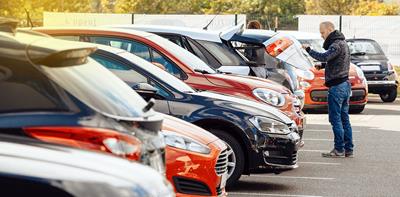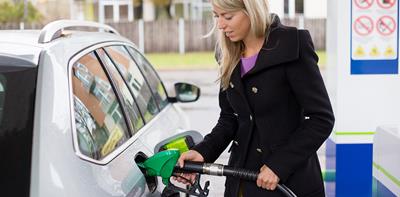
After reaching record highs in summer 2022, petrol and diesel prices have been falling in 2023.
But filling up your car is still an expensive business, and you may have noticed that prices have been steadily creeping back up again in recent weeks. So, why is fuel so expensive, and how can you make savings to ease the strain on your household budget?
EASY AS HACK
To save fuel, make sure your tyres are pumped to the correct pressure. According to National Tyres and Autocare, underinflated and overinflated tyres can increase fuel consumption by as much as 10% because of the increased drag on the wheel while driving.
At a glance
- Oil cuts caused petrol and diesel prices to rise in summer 2023
- Fuel retailers are being ordered to publish live fuel prices after damning CMA report
- Follow these tips to save money on fuel
How much is petrol and diesel in the UK?
Government Data from 14 August 2023 put the average price of unleaded petrol at 147.8p per litre, while diesel stood at 150.4p a litre. For petrol, this marks the highest price recorded since the start of the year, while diesel is at a level not seen since May [1].
Although this is nowhere near the all-time high of July 2022 when petrol hit 191.6p and diesel reached 199.2p, it’s still adding pressure to families already struggling with the cost-of-living crisis.
Why are fuel prices still high?
Prices at petrol pumps depend on broader influences such as the global economy, and the impact of events such as the war in Ukraine.
The price of crude oil has risen in recent weeks after Opec+ countries, led by Saudi Arabia and Russia, cut back production [2]. Opec+, which produces around 40% of the world’s crude oil, is trying to boost prices as demand slumps amid global economies struggling to bounce back after the Covid pandemic.
The cost of fuel is also affected by the exchange rate between the pound and US dollar, which crude oil is traded in. The pound’s comparative weakness against the dollar has compounded the rise in domestic fuel costs.
On top of that, supply issues haven’t been helped by recent outages at oil refineries across the US and Asia.
What is being done to bring down the cost of fuel?
In the UK, it’s hoped that moves to boost competition in the market will help to bring down petrol and diesel prices.
This comes after an investigation by the Competition and Markets Authority (CMA) found that supermarkets were increasing their margins on fuel by as much as 6p a litre. The CMA said motorists had been overcharged by around £900 million in total [3].
Petrol retailers have agreed to work with the UK’s competition watchdog to provide live fuel prices online to make it easier for motorists to compare rates at the pump.
In March’s Budget, Chancellor Jeremy Hunt also announced he was extending the 5p cut to fuel duty by another 12 months.
How to save money on petrol and diesel
You don’t have to do anything drastic to save a decent amount of cash on petrol. In fact, small changes in your driving habits could save you money at the pump. To put this theory to the test, we put two drivers through their paces and you can see the results here.
In addition, here are six Easy As tips to help you save money on fuel:
1. Shop around for fuel
You can compare unleaded petrol and diesel prices using sites like PetrolPrices You’ll need to set up an account, but it’s free. Then just pop in your postcode, and it’ll tell you the cost of fuel at your local forecourts.
2. Avoid idling
Having the engine running when the car is stationary is called idling.
Most modern cars have engine stop-start technology, which cuts the engine when the vehicle is stationary. If you have a car with this feature, you can save on the cost of fuel by simply keeping your foot off the clutch.
If your car isn’t fitted with stop-start technology, turn off your engine if you’re stopping for a minute or two.
3. Watch your speed
Driving at a steady speed of 50 miles per hour (mph) rather than 70mph can improve fuel economy by 25%. But be sure to drive at speeds appropriate to the road you’re on [4].
4. Keep your driving smooth
As well as keeping your speed down, your driving style will affect your fuel economy. Sharp acceleration will push your revs up, which drains your fuel. And at the other end of the scale, harsh braking negatively affects the amount of miles per gallon (mpg) that your car will return.
5. Switch off the air conditioning
Having the air conditioning system turned on when you’re driving at low speeds increases the amount of fuel your car uses. When driving around town, open the windows instead of turning on the air con to help save the cost of fuel.
6. Plan your routes effectively
More efficient route planning is another great way to save on the cost of fuel. Use a route-planning app to find the quickest route and avoid congestion.
Planning to drive at times when there’s likely to be less traffic on the roads, such as rush hour and school drop-off and pick-up times is another great way to minimise your fuel consumption.

GET A QUICK QUOTE
Protect your vehicle with car insurance that’s Easy as Ageas.
[1] https://www.gov.uk/government/statistics/weekly-road-fuel-prices
[2] https://www.bbc.co.uk/news/business-52188448
[3] https://www.gov.uk/government/news/rip-off-retailers-to-be-outed-as-government-responds-to-cma-fuel-report--2#
[4] https://www.warwickshire.gov.uk/news/article/4314/slow-down-save-money-and-be-a-better-driver
Original article written 15th September 2022, updated 9th September 2023


